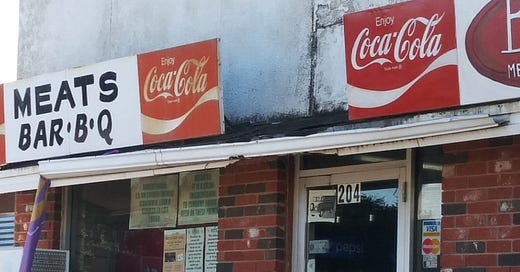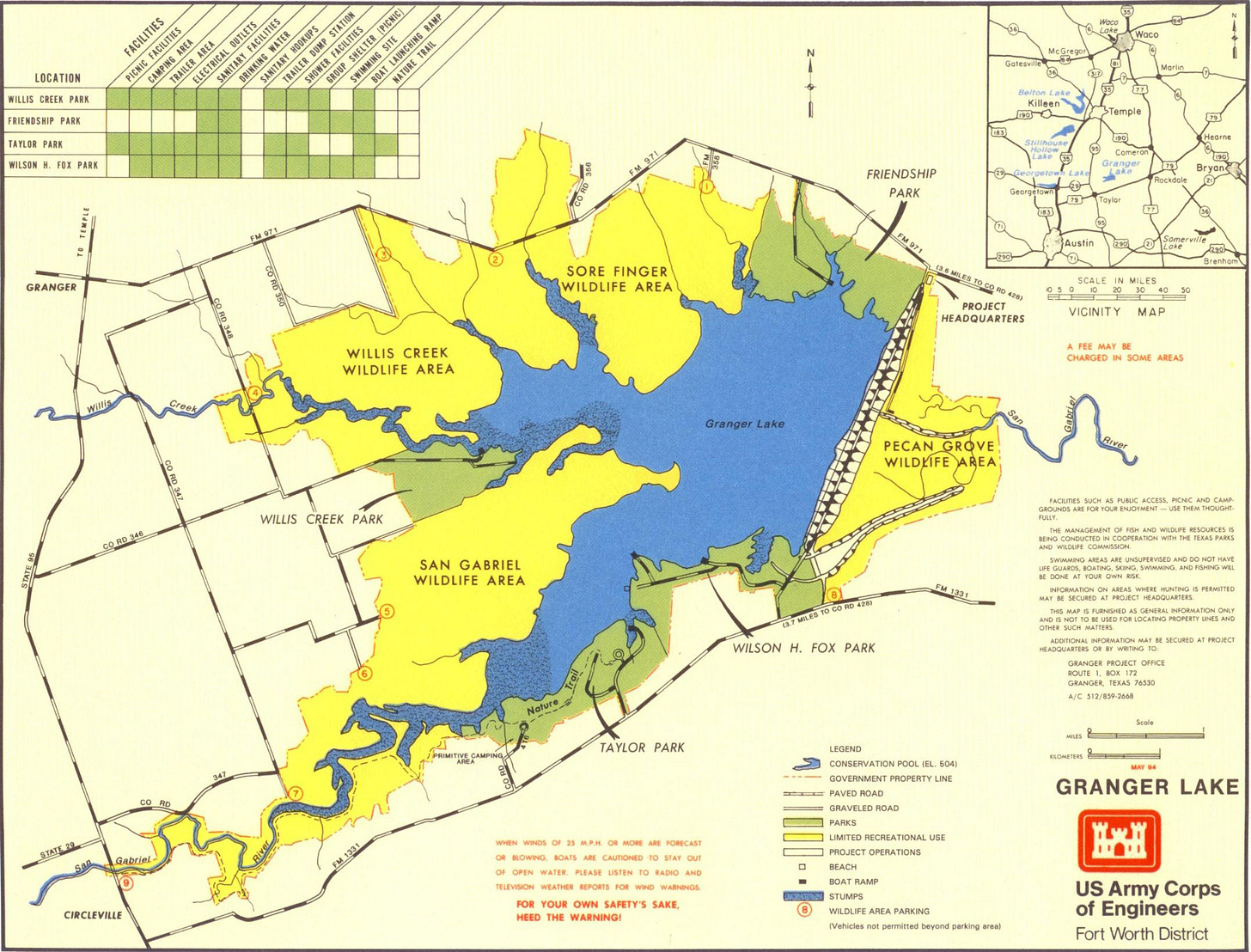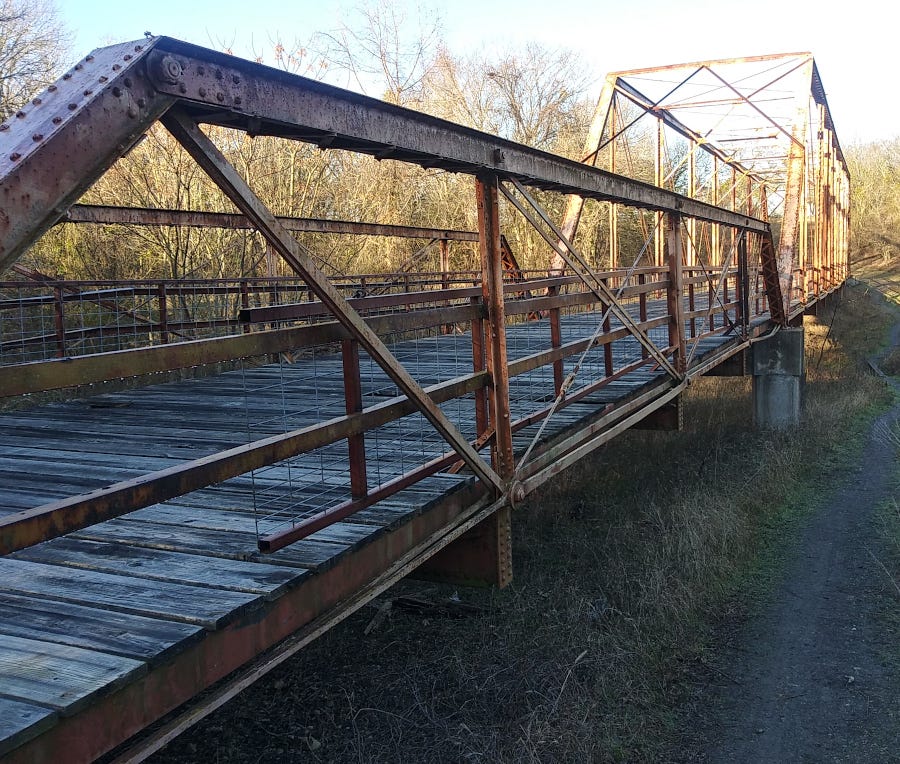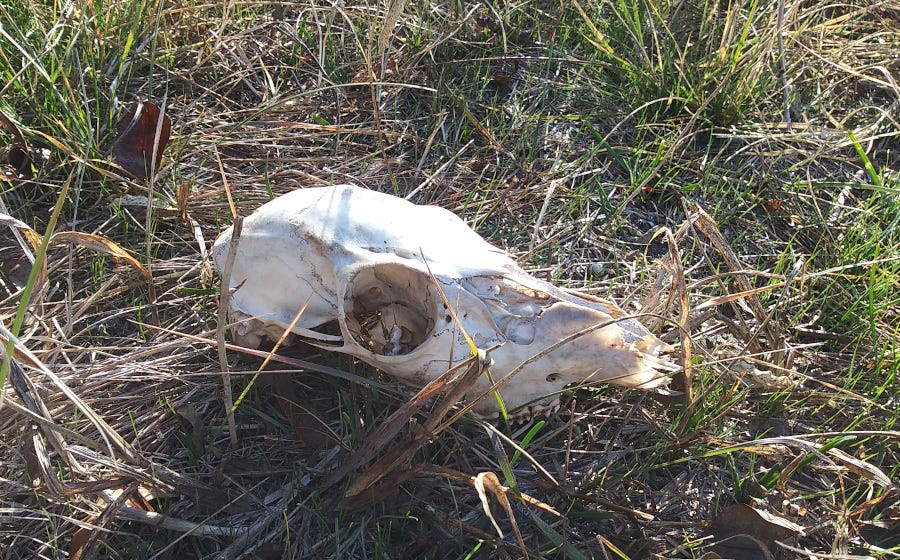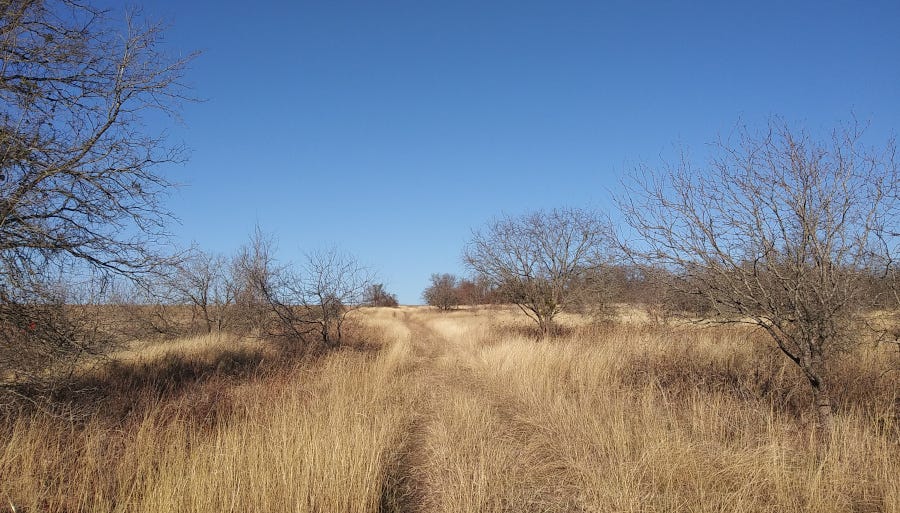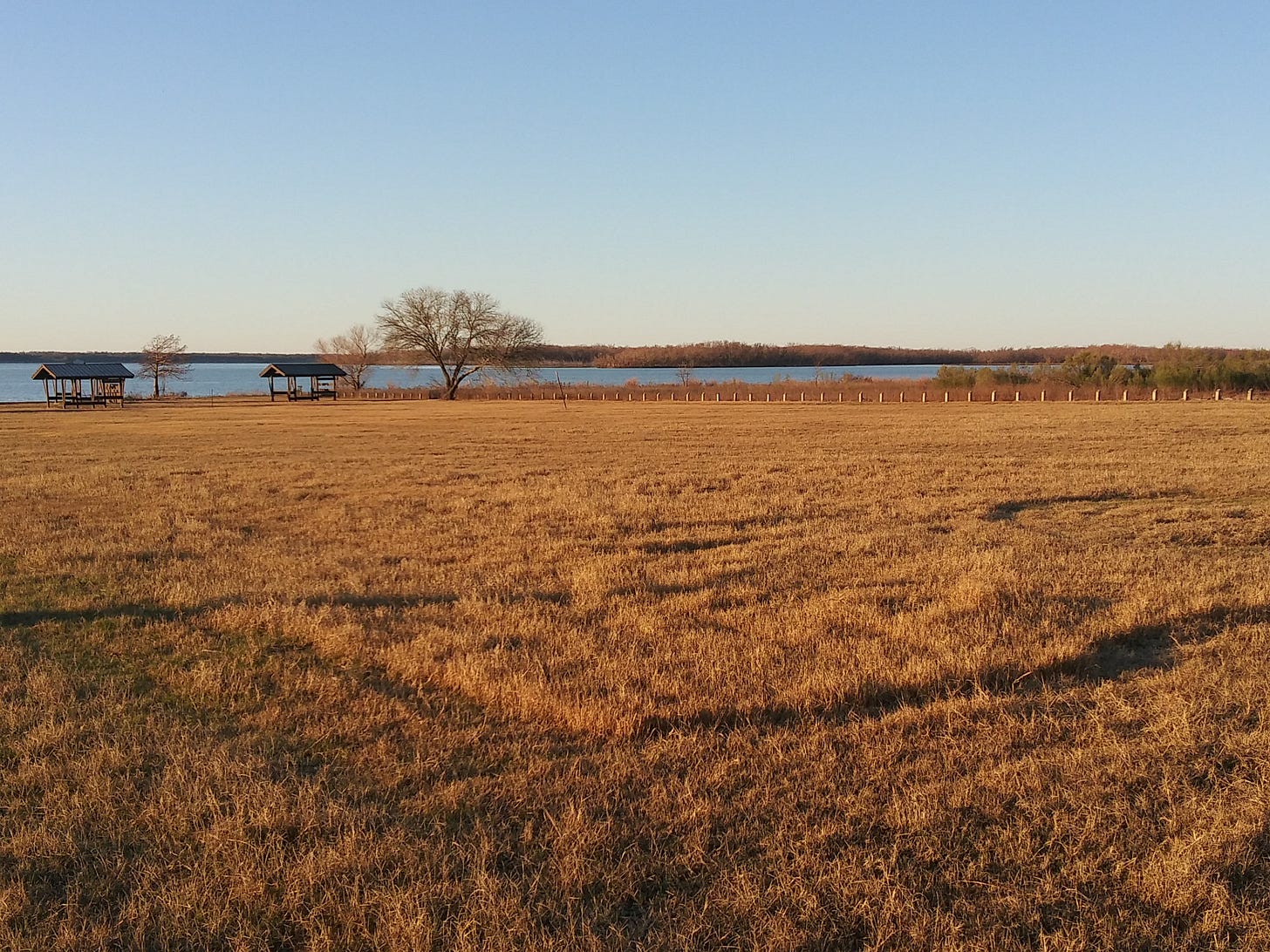Live in Texas long enough and you are bound to be dragged into a debate about smoked meats and BBQ joints, be the conversation about brisket, sausage, sides, or the setting. Without giving away too much, I’ve been known to drive straight through Lockhart, bypassing Smitty’s and Kreutz’s, to get to Luling City Market where the smart snap of their sausage is worth the extra miles. Trips to Taylor have found us not at the storied Louis Mueller’s, but rather down by the tracks at the Taylor Cafe, holding court with Vencil Mares, owner from 1948 until his 2019 passing. Most recently, we made our way to Big B’s Meat Market in Granger where lunch is served weekdays and a well-stocked butcher is on hand every day. How we ended up in Granger, buying sausage and bacon, just before 9am on the first Saturday of 2021 is a tale of haunted bridges, ghosted campsites, and at least one amateur naturalist fumbling along a lake shore in search of owls.
In early December, a series of astonishing photographs were posted to the Birds of Texas Facebook group. These photos captured a variety of owl species, all in Williamson County, Texas. As a novice birder, the owl holds a great fascination, both for its relative ease of identification and its elusiveness. The posted photos captured burrowing owls, barred owls, and great horned owls. While many of the hundreds of followers of the posts asked “where” in an effort to gain some secret knowledge of “the spot”, there was little substantive dialog about the actual locale. Then one day, while revisiting the threads, I saw someone simply post “Sore Finger?” with no response. I searched “Sore Finger Williamson County” and found that it was an apparent reference to a wildlife area on the shores of Granger Lake, about forty miles from Austin.
Earlier in 2020, with the pandemic just starting to get a grip in central Texas, I’d heard about the delights of Granger Lake when two friends had shared their hiking experiences there. Kim and I set out in late December to reconnoiter the lake and explore some of the trails. We arrived at Taylor Park, on the lake’s south side, early and found ourselves alone in the parking lot near Comanche Bluff Trail. Soon after hitting the path we came to the Hoxie Bridge, a steel span formerly erected over the San Gabriel River in nearby Circleville and moved to the current location in 1982. Reputedly haunted by the headless body of a Huntsville inmate who worked on the bridge after the area’s disastrous 1921 flood, the bridge today is closed to foot traffic. As we wandered under the bridge and then down to the shoreline, we found neither ghosts nor owls. There are times where it feels that if you look too hard, you see so little.
Back in the car, we continued to circle the lake, heading over the dam where we spotted some folks down by the spillway. We turned off and found a parking area at the entrance to the Pecan Grove Wildlife Area which hosts trails following the San Gabriel River downstream, with plenty of birds and native plant life to satisfy our curiosities. There was even a lovely deer skull, picked clean, and laid out for a full inspection.
Once out of eyesight of the parking lot, the remoteness of the landscape was most evident aurally. Even on our more isolated Austin hikes, traffic or construction noise creeps into the experience. Out here, further from the central Texas corridor of continual redevelopment, the land offers a different soundscape. You can hear the trees breathe, the river sigh, and even the earth seems to emit a particular hum.
After leaving the dam we failed to find the Sore Finger Wildlife Area, but we identified accessible areas to explore on future forays. This is how, at 7am the following Saturday, we came to be bundled for mid-30 degree weather in the parking lot of the Willis Creek Wildlife Area on the lake’s north side. As we entered the grounds, we noticed the sign mentioning hunting with permit only as we continued through the muddy pasture on our renewed owl search.
Less than a quarter mile into the walk we heard the first shotgun blast and realized that there was active hunting nearby. Being in Texas, we often hear gunfire on our walks outside metro Austin, but this seemed close and even dangerous. We soon spotted a person walking a few hundred yards away. Another amateur explorer? That fantasy eroded as we saw him take stance, aim, and fire at doves or ducks nearby. We quickly retreated to our car and drove towards Friendship Park, a nearby public campsite and boat ramp, named for a community swallowed when the dam was constructed.
Almost defying its name, the campsites at the park were deserted. We were greeted by a landscape of vacant cement pads, barren picnic tables, and cold iron grills. While the absence of fellow travelers offered us freedom to wander, the atmosphere was a reminder of the extent of the pandemic and how common activities such as lakeside camping are curtailed across the land.
We wandered towards the edge of the camping area, spotting multiple Northern Harrier hawks hunting above a marshland prairie. At this edge of the park, we stumbled upon overgrown long abandoned campgrounds, recent archaeological reminders of past family gatherings and lakeside reunions. We circled near these, still on owl lookout, but really content to bask in the solitude offered.
Driving back towards Granger, there are vantage points from which you can visualize the landscape alterations brought on by the construction of the dam and the creation of the reservoir. Designed to control the San Gabriel River, which is prone to flooding when storms squat over the Balcones Escarpment and overfeed the river, the dam was planned as early as the 1940s. At that time corn had replaced cotton as the chief cultivated crop in the region. When the dam was announced in 1948, locals were frustrated by the likely destruction of their agricultural terrain and, by extension, their livelihood. Speaking of the Corps of Engineers efforts to acquire land, local resident Loretta Mikulencak observed, “The chief damage to Granger was getting those families out of there; they were stable farm families who had inherited their land and they were not going to leave. They never recovered… They just died, one by one. And the worst of it was that it made us bitter; it made us what we weren’t. It made us different people.”
Any lingering bitterness is not overtly obvious in present day Granger. Farming is still prevalent and folks tolerate the dam which offers excellent recreational opportunities alongside practical flood control. Like other rural Texas towns, commercial activity in this hamlet is constrained and there are plenty of empty buildings downtown. However, as the Central Texas boom continues, encroachment from prosperous Georgetown and upstart Taylor seems inevitable, bringing demographic, economic, and environmental changes. That’s why, as we stop at Big B’s and select our meats, we are grateful to share in the town’s local commerce and be reminded of how briefly time stands still even in small-town Texas.
As I write this, there is snow in Austin today. We have some Big B’s sausage mixed with beans in the crock pot and are settled in to await the weather, all along planning to scout for owls in the near future.

